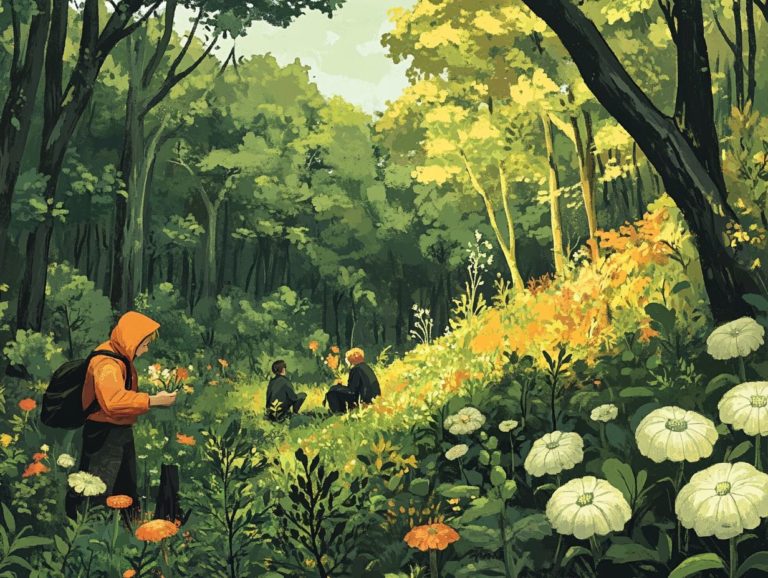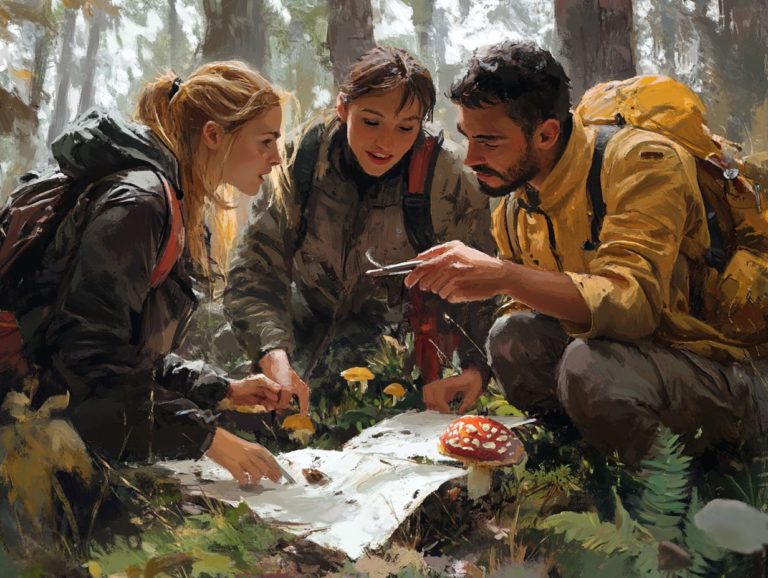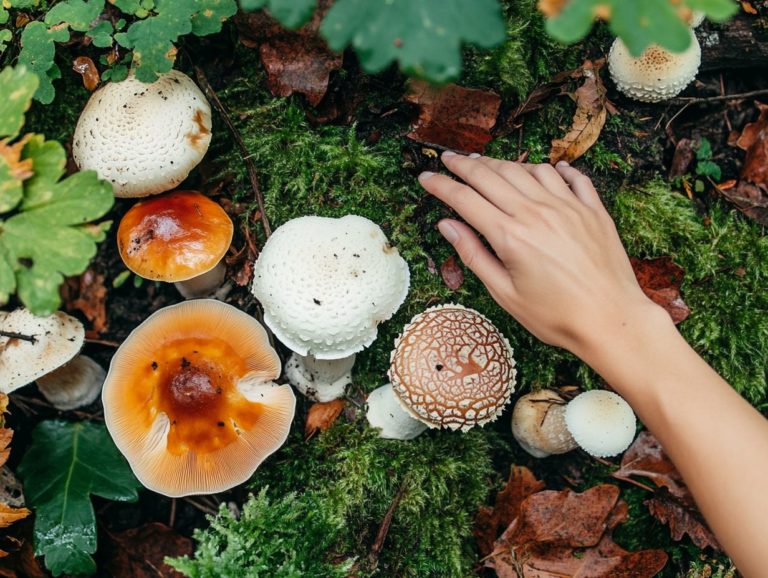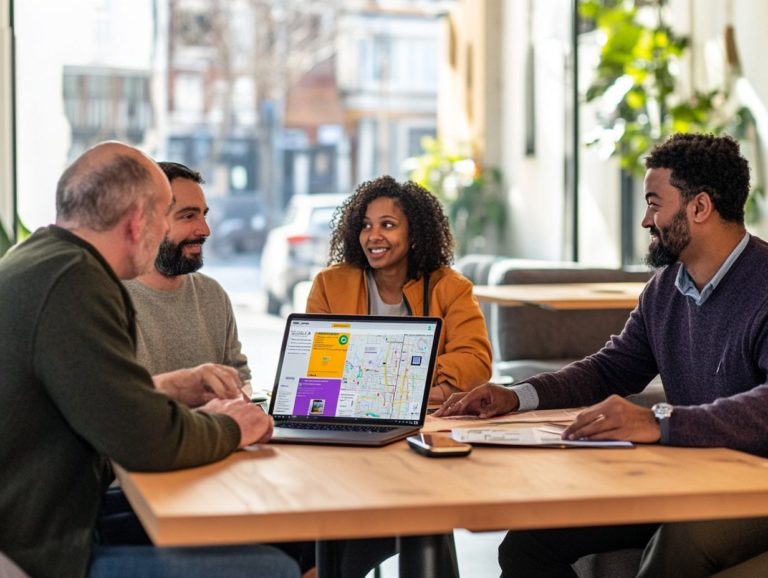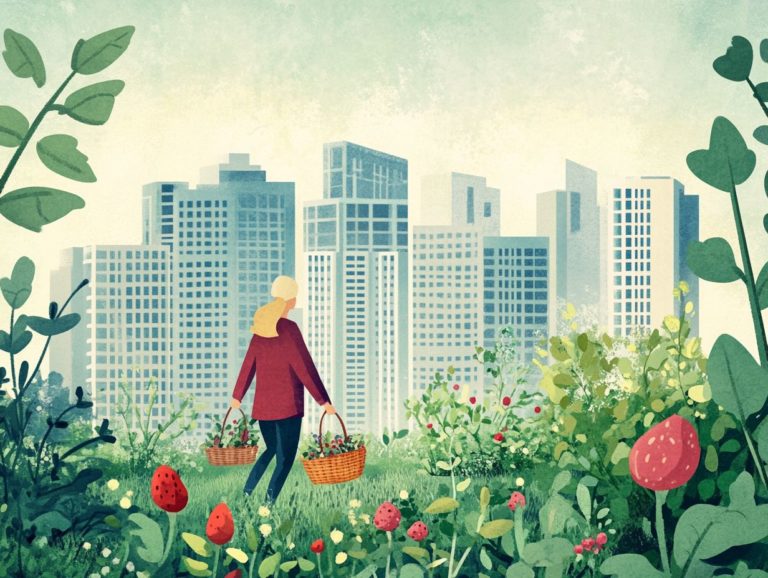What Are the Risks of Foraging Alone?
Foraging alone can be a rewarding adventure, offering you a unique opportunity to connect with nature and uncover hidden culinary treasures. However, this solitary journey comes with its own set of challenges and risks both physical and emotional.
Let s explore the dangers you might face while foraging solo, from navigating treacherous terrain to managing feelings of isolation. This article presents essential safety precautions to keep you secure and explores alternative foraging options that can enrich your experience. Dive in with us as you uncover the ins and outs of foraging alone!
Contents
Key Takeaways:
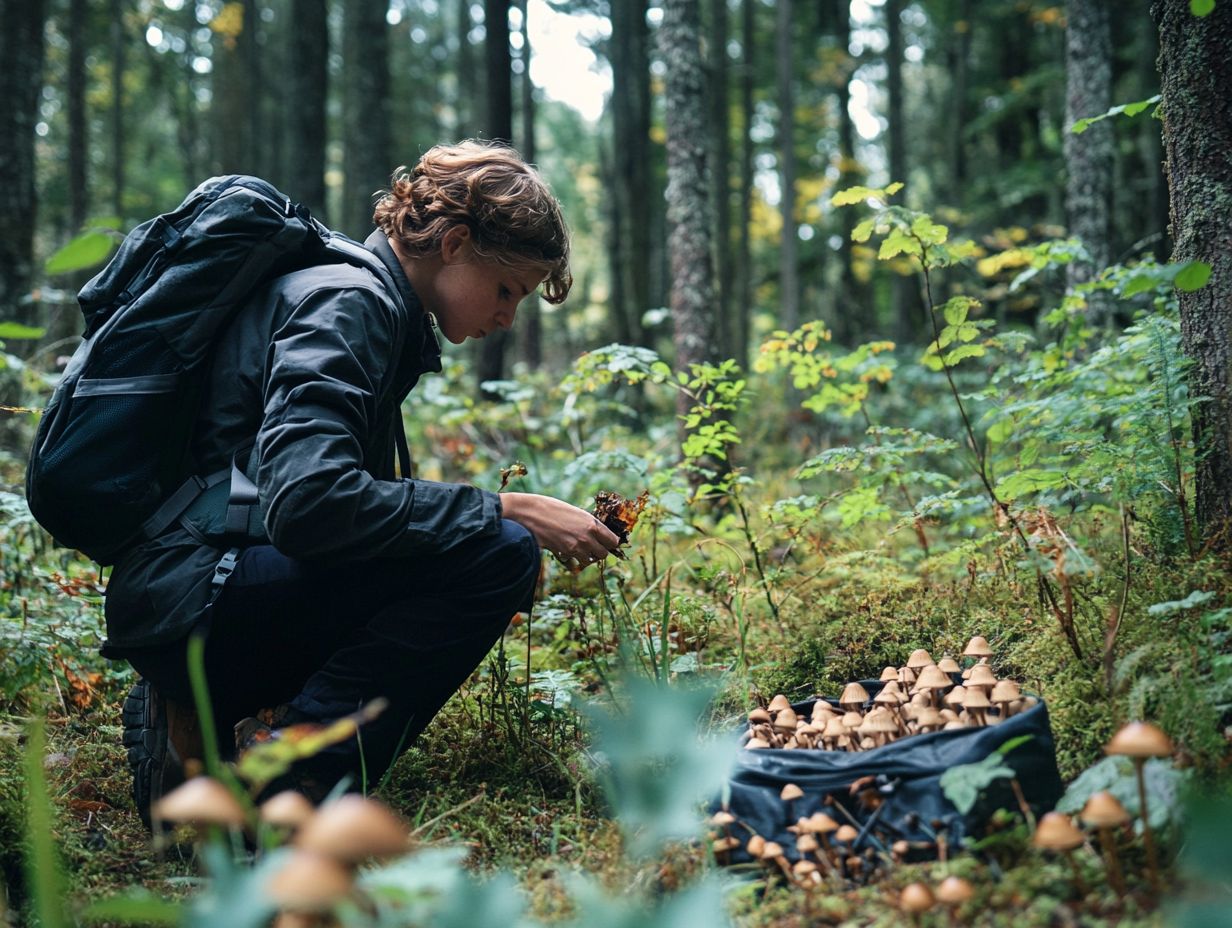
- Foraging alone can pose physical risks such as getting lost or injured without assistance.
- There are also mental and emotional risks to foraging alone, including feeling isolated or overwhelmed.
- To minimize risks, it’s important to take safety measures and prepare properly before foraging alone.
What is Foraging Alone?
Foraging alone is all about the thrill of searching for and gathering wild edibles like plants, mushrooms, and berries without anyone else tagging along. This practice can be incredibly rewarding, allowing you to connect deeply with nature, uncover nutrient-rich edible plants, and embrace a more sustainable lifestyle.
Whether you’re wandering through urban landscapes or rural areas, foraging alone brings unique challenges and risks, especially for beginners. Without sufficient knowledge of local flora and fauna, you might mistake safe plants for dangerous ones or face contamination risks in certain areas.
By diving into this solitary pursuit, you can enhance your understanding of the ecosystem and its bountiful offerings. There s a world of wild edibles waiting to be discovered, from dandelion greens and wild garlic to a variety of berries and mushrooms, each boasting unique flavors and health benefits.
Urban foraging, in particular, can turn overlooked spaces into fruitful foraging grounds, showcasing the potential to enhance local food systems. As you gather these natural treasures, you re not only nourishing yourself but also contributing to a more sustainable lifestyle, reducing your reliance on commercially produced foods.
However, it’s crucial to familiarize yourself with safe identification techniques to enjoy the fruits of your labor without jeopardizing your health.
Understanding the Risks of Foraging Alone
Foraging on your own carries a range of risks that you need to consider for your safety and well-being while gathering wild edibles, especially in unfamiliar settings. One major concern is the possibility of mistaking safe plants for dangerous ones, which could result in the unfortunate ingestion of toxic varieties.
Contamination from pollutants is another serious concern, particularly in urban areas near polluted areas that require cleanup or coastal regions where clams are harvested. Being aware of these risks is essential for a safe and enjoyable foraging experience.
Physical Risks
Physical risks associated with foraging alone can include injuries from slips and falls, as well as unexpected encounters with wildlife. Understanding foraging safety is vital for mitigating these risks and ensuring a rewarding experience outdoors.
For novice foragers, maintaining vigilance about your surroundings is essential, as dense underbrush can conceal uneven terrain that might lead to falls. Learning to recognize the characteristics of poisonous plants such as the color, shape, and texture of their leaves will significantly reduce the chances of accidental ingestion.
It’s wise to carry a reliable field guide and familiarize yourself with common edible varieties before embarking on your foraging adventure. Equally important is ensuring you wear appropriate footwear and attire; sturdy boots provide crucial support, while long sleeves and pants protect against thorny bushes and pesky insect bites.
Establishing a communication plan before you head out can enhance your safety further by keeping others informed of your location.
In conclusion, foraging alone offers exciting opportunities but requires careful planning and knowledge to ensure safety. Embrace the adventure responsibly, and you may find yourself enriched by the experience of connecting with nature.
Mental and Emotional Risks
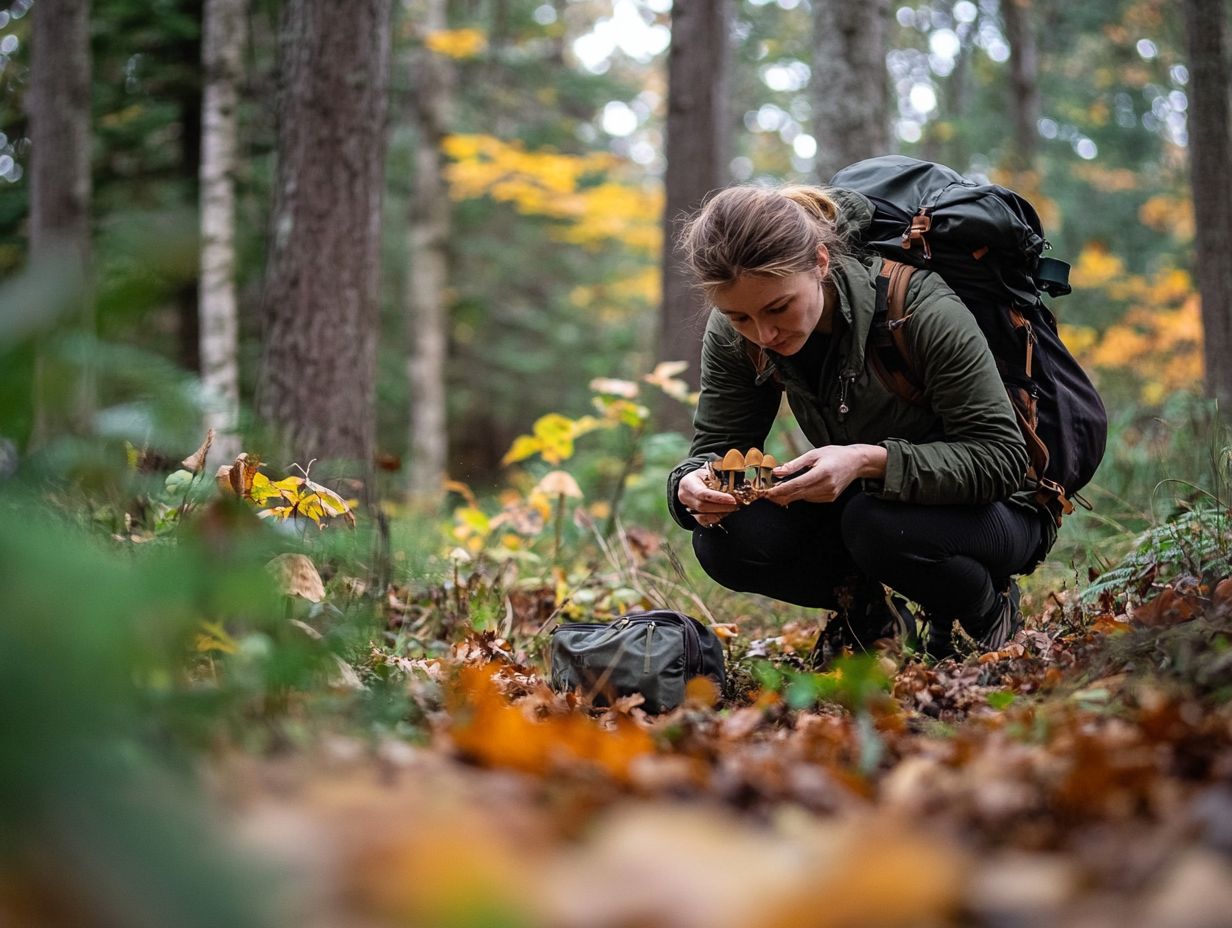
Foraging alone can bring about mental and emotional challenges. You may experience feelings of isolation or anxiety as you navigate the wilderness or urban landscapes without a support system.
Joining foraging clubs or community gardens can greatly reduce these worries. These groups offer valuable opportunities for social interaction and learning together.
This sense of community can truly transform your foraging adventures. You ll connect with like-minded individuals who share your passion for nature’s bounty. As you gather with fellow enthusiasts, you’ll find a welcoming environment where questions can be posed freely and knowledge can thrive.
Urban foraging, in particular, takes on a vibrant community aspect. Participants exchange local tips and unique discoveries that not only enhance their skills but also uplift their mental well-being.
Ultimately, through collaboration and companionship, foraging can evolve into a source of joy and fulfillment. It replaces feelings of loneliness with a profound sense of belonging, whether you re in the heart of the city or out in the countryside.
Precautions for Foraging Alone
Taking precautions before you set off on a solo foraging adventure is essential for ensuring your safety and success. This is especially true for beginner foragers who may not yet know the local edible plants and wild edibles.
Proper preparation involves researching your chosen area and familiarizing yourself with the types of plants and mushrooms that can be foraged. Be vigilant about potential hazards that may arise during your journey.
Safety Measures and Preparation
Implementing effective safety measures and thorough preparation before foraging not only reduces risks but also enhances your overall experience. Consider the contamination risks that come with urban foraging. Equip yourself with the necessary tools and knowledge for safe identification.
To embark on this rewarding adventure, start by carrying a reliable field guide. This should offer detailed information on local edible species and highlight poisonous look-alikes. Essential tools include:
- A sharp knife for harvesting.
- A basket or breathable bag for collection.
- Gloves to protect your hands from potential irritants.
Before heading out, check local regulations regarding foraging in specific parks or urban areas to avoid any legal troubles. Utilizing mobile apps or community forums dedicated to plant and mushroom identification can be invaluable. These resources provide real-time assistance in the field.
Understanding your environment is key. Avoid areas with heavy pollution or pesticide use to minimize contamination risks, ensuring a safe and enjoyable foraging experience.
Alternatives to Foraging Alone
If you feel uneasy foraging solo, consider the enriching experience of group foraging or joining foraging clubs. These options not only provide companionship but also unlock a wealth of shared knowledge.
Engaging in these community activities allows you to explore the fascinating realm of wild edibles alongside others. This ensures safety while elevating your overall foraging adventure, even in urban settings.
Join a local foraging club today!
Group Foraging and Other Options
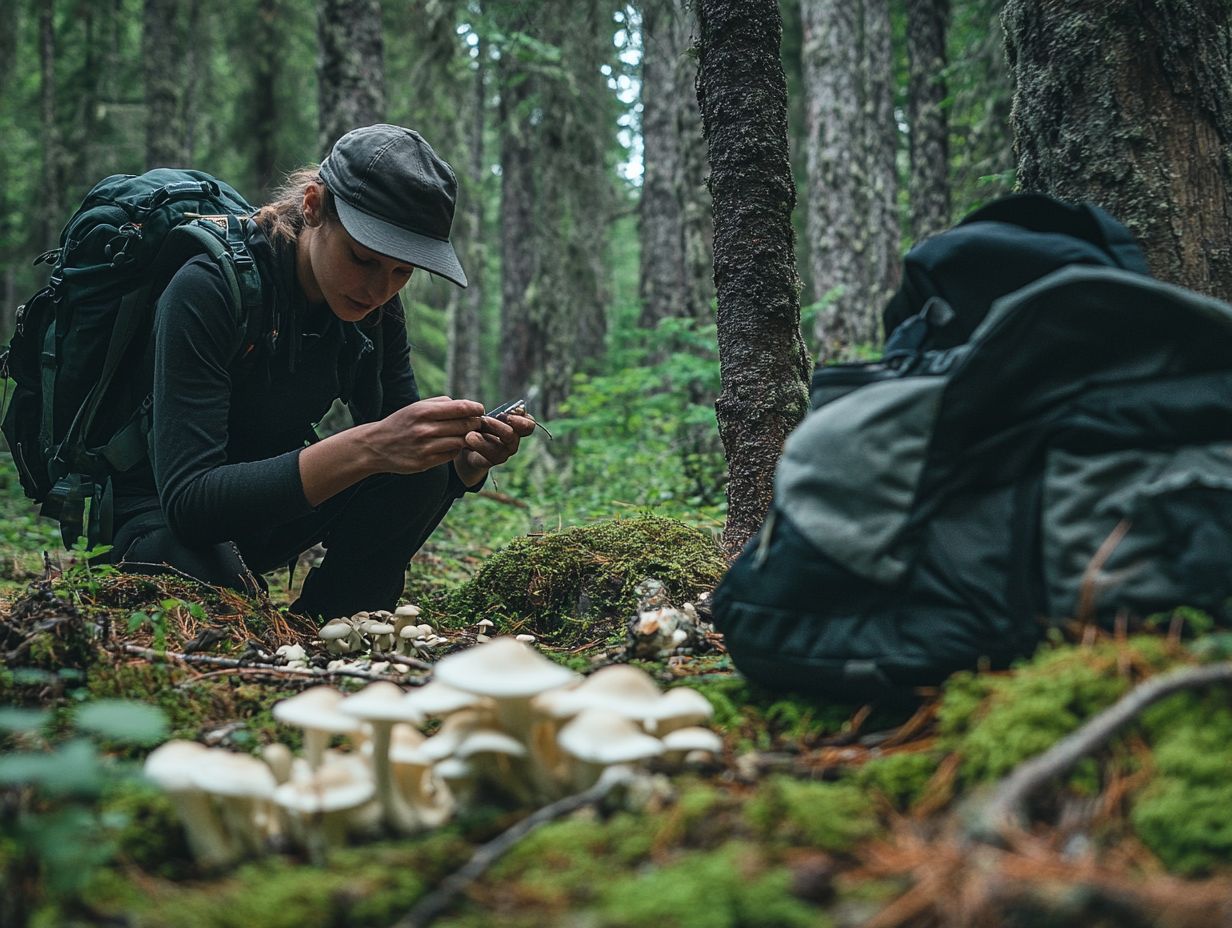
Group foraging is a great alternative to foraging alone. You can learn from experienced foragers while exploring local green spaces rich with wild edibles.
Engaging with foraging clubs and community gardens nurtures friendship and a shared commitment to living in a way that protects our environment. These gatherings create a friendly space where you can meet others who love foraging!
Enthusiasts can exchange valuable tips and share captivating stories. Many clubs schedule outings and workshops. This makes it easy to connect with fellow nature lovers who share your interests.
Community gardens often incorporate foraging workshops into their activities. This collaborative learning experience enriches your understanding and strengthens community bonds.
It transforms foraging into a vibrant social event, where people come together to celebrate nature and sustainability.
Frequently Asked Questions
What are the risks of foraging alone?
The main risk of foraging alone is the potential for getting lost or injured without anyone to help or provide support. It can also be dangerous if you come across wild animals or poisonous plants without the knowledge or assistance of others.
Is foraging alone illegal?
The legality of foraging alone varies depending on the location and local laws. Some areas may require permits or prohibit foraging altogether, while others allow it with certain restrictions. It is important to research and follow the rules and regulations of the area you plan to forage in.
What precautions should I take when foraging alone?
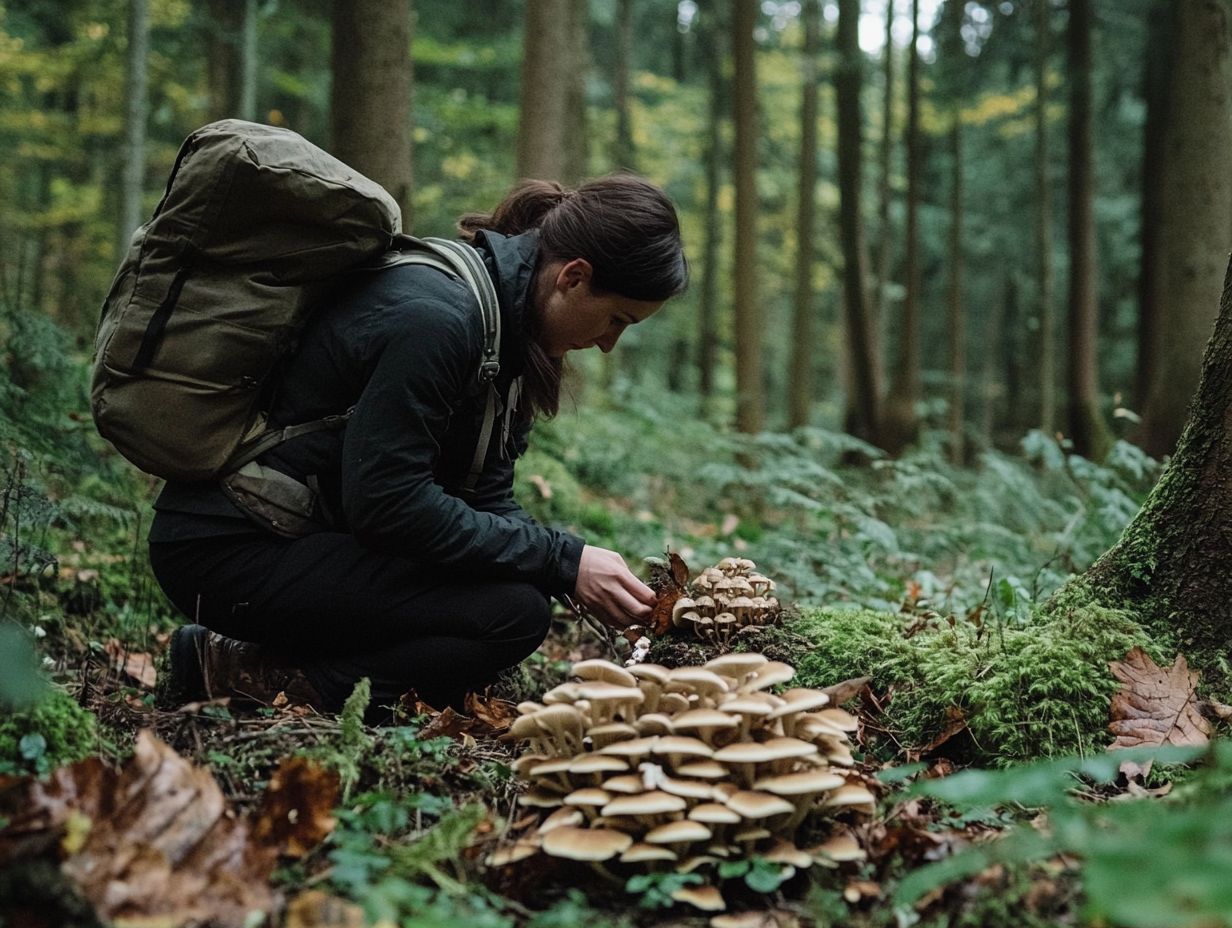
It is important to inform someone of your plans and expected return time before heading out to forage alone. It is also recommended to bring a map, compass, first aid kit, and any necessary tools or equipment.
Familiarize yourself with the area and potential risks before setting out.
How can I stay safe while foraging alone?
To stay safe while foraging alone, be cautious and aware of your surroundings. Avoid wandering too far and always have a way to navigate back to your starting point.
Stay on designated trails and avoid risky areas such as cliffs or steep slopes.
Are there any risks specific to foraging alone in the wilderness?
Foraging alone in the wilderness can present additional risks, such as encountering dangerous wildlife or harsh weather conditions. It is important to research the area and be prepared for any potential hazards.
Having some outdoor survival skills and knowledge is also recommended in case of unexpected situations.
What should I do if I get lost while foraging alone?
If you find yourself lost while foraging alone, try to stay calm and retrace your steps. If you are unable to find your way back, stay in one place and use any signaling tools or techniques you have available to attract attention.
If possible, try to conserve your energy and wait for rescue.

